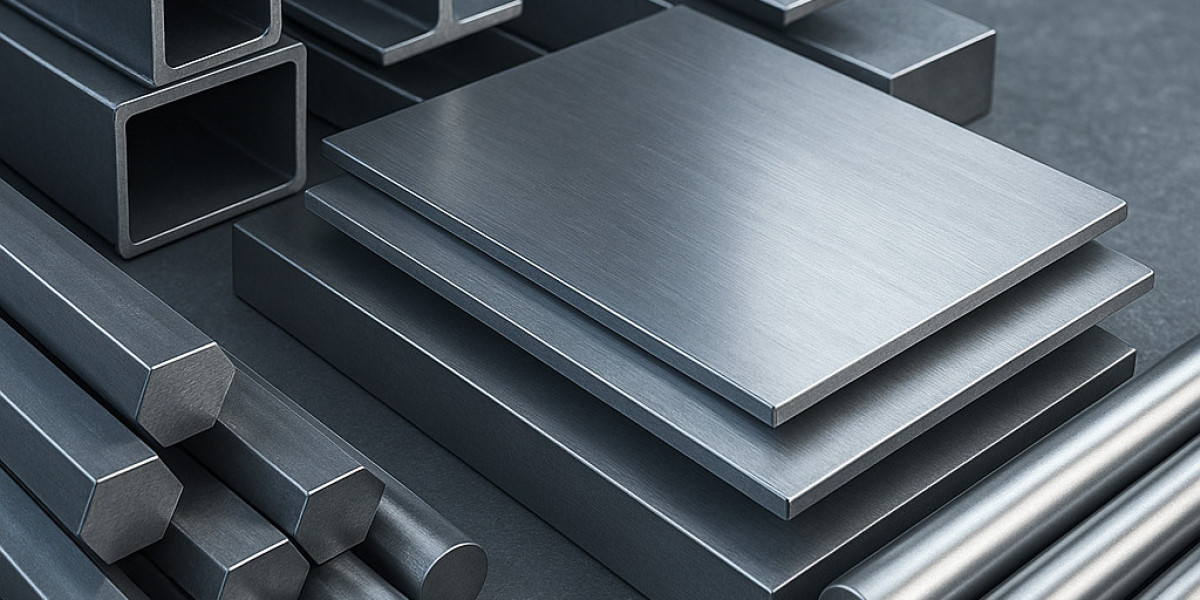The global steel market share attained a volume of around 1738.39 MMT in 2024. The market is projected to grow at a CAGR of 2.24% between 2025 and 2034 to reach a volume of nearly 2169.48 MMT by 2034. This steady growth trajectory underscores steel’s integral role in modern infrastructure, transportation, manufacturing, and energy sectors across the globe.
Steel, often referred to as the backbone of industrialization, plays a critical role in shaping economies. As global development continues, especially in emerging economies, the demand for steel remains robust. Despite facing challenges such as fluctuating raw material prices and stringent environmental regulations, the steel industry is poised for long-term expansion, driven by innovative production technologies, strategic investments, and a growing focus on sustainable practices.
Key Market Trends Driving Growth
1. Infrastructure Development Across Emerging Economies
One of the key factors fueling the growth of the steel market is the rise in infrastructure development projects in countries like India, Indonesia, Brazil, and several African nations. Governments are heavily investing in bridges, highways, railways, airports, and urban housing to accommodate growing populations and urbanization. These projects directly drive steel consumption, especially long products like rebars and structural steel.
2. Rising Demand from the Automotive Industry
The automotive sector continues to be a major consumer of steel, particularly high-strength and lightweight variants that help improve fuel efficiency and safety. As global vehicle production increases and electric vehicles (EVs) gain momentum, the need for specialized steel grades for battery enclosures, structural components, and chassis systems is expected to rise. Additionally, automakers are focusing on recycling and reusing steel components, aligning with circular economy principles.
3. Technological Advancements in Steel Production
The adoption of advanced technologies such as electric arc furnaces (EAF), automation, and artificial intelligence is revolutionizing steel manufacturing. These innovations not only enhance production efficiency and reduce energy consumption but also support cleaner production practices. The integration of Industry 4.0 technologies enables real-time monitoring and optimization of operations, thereby increasing output quality and reducing wastage.
4. Sustainability and Green Steel Initiatives
Environmental concerns have led to a significant shift toward greener and more sustainable steel production. Major players in the industry are investing in carbon capture technologies, hydrogen-based direct reduced iron (H-DRI) processes, and renewable energy-powered plants. The transition to “green steel” is gaining traction, especially in Europe and North America, as industries strive to reduce their carbon footprint and meet regulatory requirements.
Regional Insights and Market Dynamics
Asia-Pacific: The Dominant Market Force
Asia-Pacific continues to lead the global steel market, with China accounting for the lion’s share of production and consumption. Despite concerns over overcapacity, China's Belt and Road Initiative and its domestic infrastructure push keep demand strong. India is another high-growth market, supported by government initiatives like “Make in India” and its massive infrastructure pipeline.
North America: Shifting Towards Cleaner Production
The North American steel market is undergoing a transformation with an increasing number of EAF-based production facilities coming online. The U.S. steel industry is benefiting from federal investments in infrastructure, particularly under the Bipartisan Infrastructure Law. Additionally, trade protection measures and tariffs have encouraged domestic production.
Europe: Pioneering Sustainable Steel
Europe is leading in the transition toward low-carbon steel, with several pilot projects underway for hydrogen-based steelmaking. European governments are providing subsidies and regulatory support to facilitate decarbonization. However, the region also faces challenges such as high energy costs and competition from low-cost imports.
Middle East & Africa: Emerging Opportunities
The Middle East is investing in diversifying its economies beyond oil, leading to increased construction and steel demand. Africa, with its abundant mineral resources and infrastructural needs, presents a significant untapped market, although it remains underdeveloped due to logistical and financial constraints.
Challenges Hindering Market Growth
While the outlook for the steel industry is generally positive, it does face several challenges:
Raw Material Volatility: The prices of iron ore, coking coal, and scrap steel often fluctuate due to geopolitical tensions, supply chain disruptions, and changing demand patterns. This affects the profitability and planning of steel manufacturers.
Environmental Regulations: Compliance with strict environmental norms adds to operational costs. Steelmaking is energy-intensive and a major source of carbon emissions, making the shift to greener methods both necessary and expensive.
Global Trade Disputes: Trade tensions and tariffs, particularly between major economies such as the U.S., EU, and China, can impact the flow of steel products and raw materials. Protectionist policies may shield domestic industries in the short term but hinder global competitiveness.
Future Outlook: What Lies Ahead
The steel industry’s future will largely be shaped by three overarching themes:
Sustainability: The transition to green steel will redefine competitive advantage. Companies investing in low-emission technologies and circular economy models will lead the next growth wave.
Digitalization: Smart manufacturing and digital twins are being increasingly adopted to streamline operations, reduce downtime, and improve resource utilization.
Diversification of Supply Chains: Geopolitical instability and recent global crises have encouraged steel producers to diversify their raw material sources and customer bases to mitigate risk.
As innovation and sustainability take center stage, the industry’s transformation will not only support growth in terms of volume but also enhance its resilience and contribution to global development goals.








